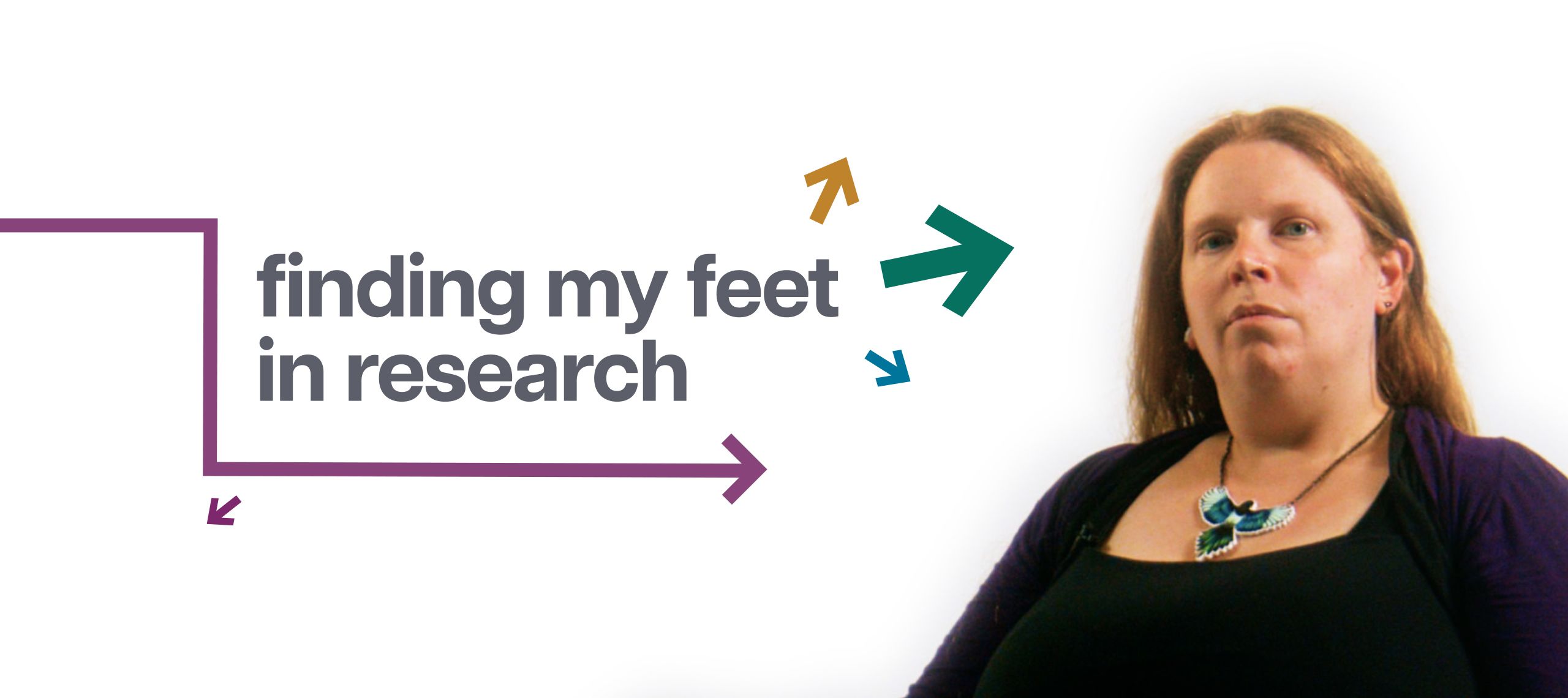
Research Journeys: Finding my feet in research
This person, a consultant and so well regarded in his field, cared what I thought about how we could treat these patients better.
Jen has always been fascinated by the complexity of the human body. But her experience is seen through the eyes of a computer scientist, bio-scientist and now a medical and biological engineer.
She is currently working on a way to improve outcomes for patients whose feet are affected by diabetic ulcers. It is her hope that this will lead to more interdisciplinary projects, connecting labs and the outside world.
Jen is an Academic Fellow in muscular skeletal medical technologies. Her work focuses on improved regenerative therapies for musculoskeletal tissues.
Transcript
[Jen is sitting in front of a white background speaking directly to camera.]
Jen: One day I hope that my research is going to change the world for patients at risk of diabetic foot ulcers.
These are ulcers that form on the sole of the foot in diabetic patients. And even if they heal, those patients are more likely to die within the next five years than patients with breast and prostate cancer combined. They have a phenomenal effect on patients lives and also the budget and the NHS. Part of the problem is that people don't think about their feet. All they do is get us places that we want to go. But they're at the end of your legs and they're far away.
I've got to a place that I never expected to be. So I went to university to do physics and astronomy at the University of Sheffield and I failed spectacularly in my second year. I realised that I needed to change course and I ended up graduating with a good degree in artificial intelligence and computer science. But all it taught me was I missed biology. There's too many things in the world that revolve around biology.
And so I did a PhD in biosciences. At the end of that, I got a job at the University of Leeds as a research fellow. and it was looking at new ways to treat cruciate ligament ruptures in the middle of the knee, which happen a lot in different sports players. It’s not because I had an interest in the knee or that kind of treatment approach. There was a job and that's what led me there.
But then I moved into my first academic role, and I started to have to find my own way in the world. And what I found is I got to interact with loads and loads of different people throughout my research. So, I spent lots of time doing public engagement. I love telling people about my science. It's one of the really good parts of the job. And I remember going to science fairs and festivals like The Great Yorkshire Show and spending an hour talking to the same little girl because she was really interested. And everything I could bring out from under the table she wanted to see. It was great. As well as talking to other children and their parents and teaching them something together. And you could see their enthusiasm. And that helped me think, yeah, I'm in the right area. This treatment approaches for the joints is great.
But I got the opportunity to go and shadow a clinician in the diabetic limb salvage service in Leeds. And the name of that is quite rightly frightening. Those patients who go to the limb salvage service are there because they are at risk of losing a limb. And not just at risk of losing a limb, but if it's not treated, they're at risk of dying.
But what I found there was this eye opening experience looking at the patients and the nurses and the doctors all working together. And talking to the doctor, this this person who is a consultant and is so well regarded in his field, but he cared what I thought about how we could treat these patients better. And that was really interesting because it gave me a problem that I could try and help solve with all the skills and the knowledge I'd learned.
And I'm lucky in the institute I work in and that there's a mix of biologists and engineers and physicists and chemists who all work together to solve problems. And all of those people have different perspectives. We're looking at a biological problem. It's in the human body. But you stand on it, so it's an engineering problem.
And what I’ve found fascinating is that my research is bringing all of those together. I'm looking at how can we make sure that we can treat those patients better, that the clinicians have a better way of treating them, that the patients understand why their feet are so important, and then we can take all of those resources to engagement events where we can talk to everybody else about why their feet are so important.
My research journey has taken me from just going along, taking steps towards whatever happened to be next and come my way to something where now I have a goal. I've got something to work on and I've got a problem that I'm really interested in solving. I feel like I've finally found my feet and my place in research.